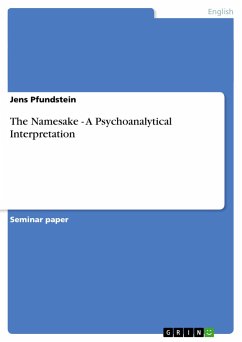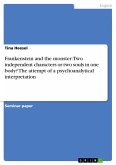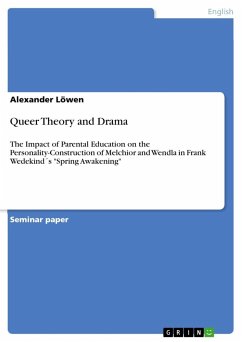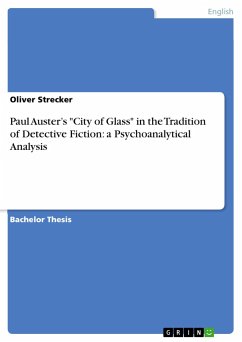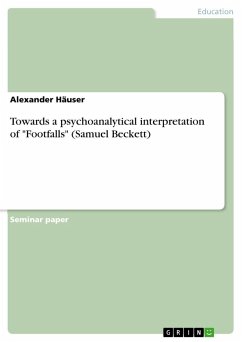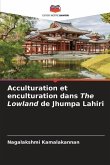Seminar paper from the year 2008 in the subject English Language and Literature Studies - Literature, grade: 1,3, Saarland University (Anglistik, Amerikanistik und Anglophone Kulturen), course: India & the American Dream: Fictional Examples, language: English, abstract: In this paper, we will attempt a psychoanalytically tinted interpretation of one, if not the main character in Jhumpa Lahiri's The Namesake. To be more specific, we intend to concentrate on Gogol Ganguli. As the novel is said to portray "... conflicts that ... haunt Gogol on his own winding path through divided loyalties, comic detours, and wrenching love affairs" (Lahiri reverse of the novel), we should thus be allowed to ask what conflicts ? Is it true that there are several conflicts or is it possible that there exists only one major conflict ? With these questions in mind and the feeling that there is something in the text we are not explicitly told, we decided to try a psychoanalytical interpretation of Gogol - an interpretation which allows us to approach the text as follows:We will first provide the definitions of the basic concepts and ideas. As these concepts and ideas are not only abstract, but contradictory to a certain degree, we feel obliged to simplify and generalize these notions - without falsifying or distorting the basic concepts. Secondly, we will provide the reader with our line of argument. In other words, we will piece together the basic notions in order to form a coherent line of thought. The third step consists of an application of this line of thought to the text, which, in turn, is expected to yield new insights. As we are convinced that this approach provides new insights, we will deal with their implications in step four. This then brings us to the conclusion of the paper, which will take the form of a short summary of all our findings.
Hinweis: Dieser Artikel kann nur an eine deutsche Lieferadresse ausgeliefert werden.
Hinweis: Dieser Artikel kann nur an eine deutsche Lieferadresse ausgeliefert werden.

